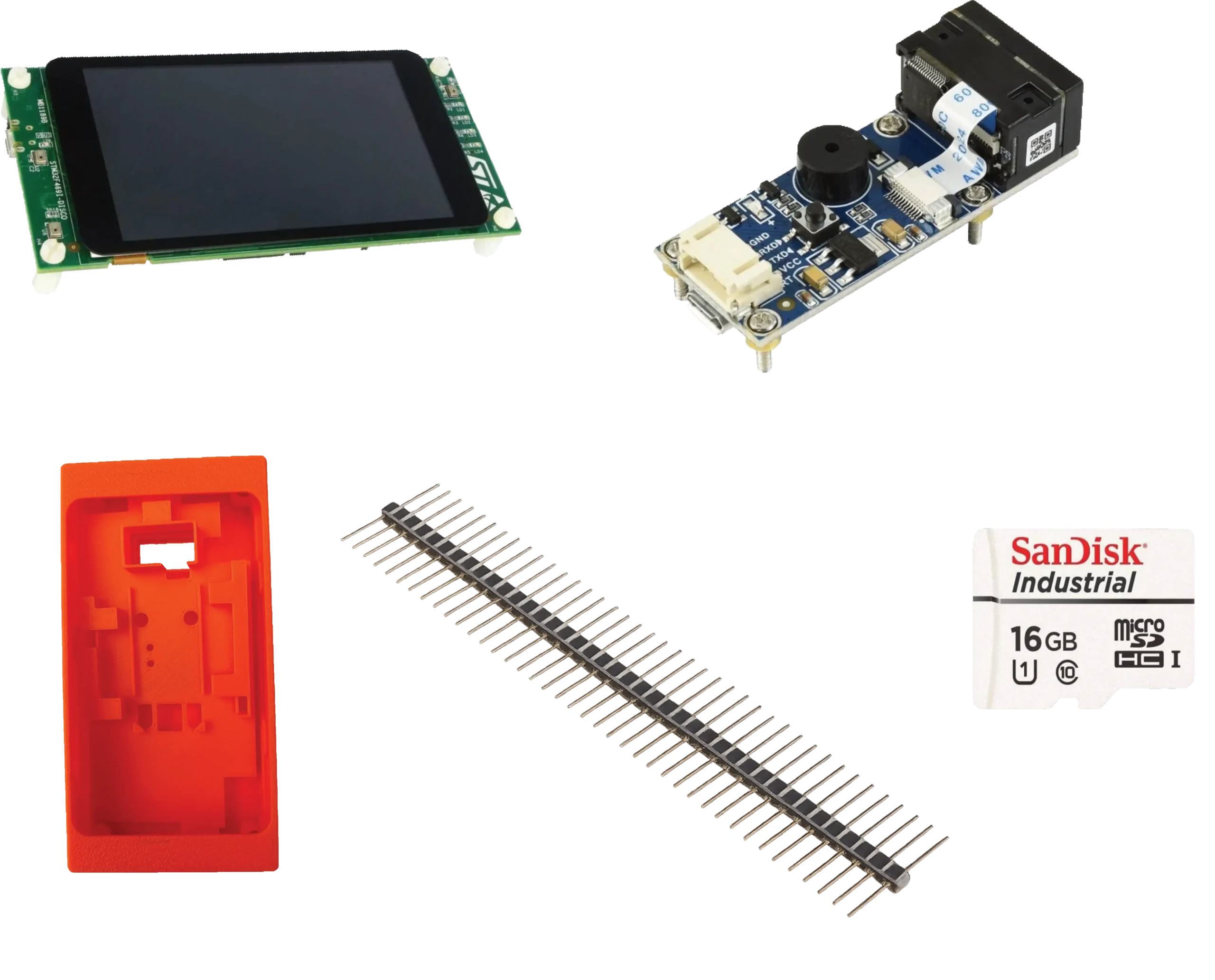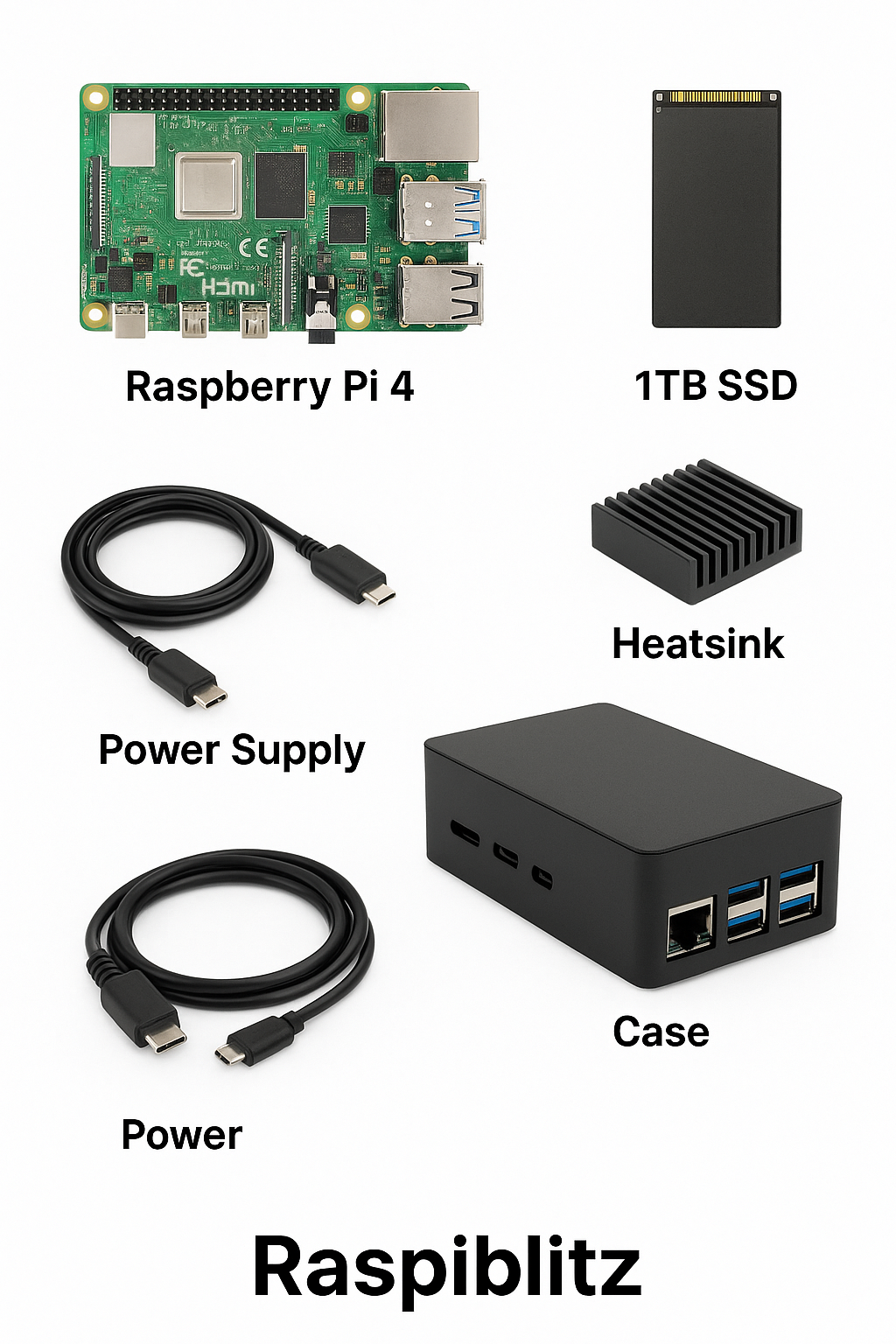The Core Hardware Behind Some Of Your Favorite Open-Source Bitcoin Devices
The foundation of every open-source Bitcoin wallet project lies in its hardware components—the tangible elements that bring transparency, control, and innovation together. From compact microcontrollers to camera modules and custom displays, each piece plays a vital role in securing private keys and enabling safe, offline transactions.
Projects like SeedSigner, Specter DIY, Krux, Raspiblitz, and Blockstream Jade DIY demonstrate how accessible, off-the-shelf components can be transformed into powerful Bitcoin tools. By combining open-source firmware with readily available hardware, users can build, verify, and customize their devices—free from closed ecosystems or vendor dependency.
This visual layout highlights the core hardware used in each project, showing how they differ in structure yet share the same mission: to empower individuals through self-custody and verifiable security.
Each device reflects a unique philosophy:
- SeedSigner champions minimalism and offline security.
- Specter DIY focuses on modularity and flexibility.
- Krux brings firmware-first creativity to ESP32 devices.
- Raspiblitz runs as a full Bitcoin and Lightning node.
- Blockstream Jade merges open-source principles with polished, ready-to-use design.
Components
1. SeedSigner — Minimalism with Raspberry Pi Zero
SeedSigner is one of the most recognized DIY Bitcoin signing devices. It’s designed to be air-gapped, meaning it never connects to the internet or stores any sensitive data after use. The hardware reflects this philosophy of simplicity and security.
Hardware Components:
-
Raspberry Pi Zero (v1.3 or 2W): The main computing board responsible for processing and running the SeedSigner software. It’s compact, affordable, and perfect for offline signing operations.
-
Waveshare 1.3” or 1.54” LCD Display: A small screen used to display QR codes, seed phrases, and transaction details.
-
Waveshare Camera Module (V1 or V2): Used to scan QR codes for PSBTs (Partially Signed Bitcoin Transactions). This feature enables SeedSigner to interact without direct USB or network connections.
-
3D Printed or Acrylic Case: Optional but commonly used for protection and aesthetics. Many community members share printable case designs.
-
MicroSD Card: A minimum of 64MB microSD card, used to flash the operating system (SeedSigner OS) and store temporary working files.
Why this hardware?
It’s inexpensive, widely available, and intentionally chosen to avoid proprietary chips that could compromise transparency. The goal is to make Bitcoin signing accessible while maintaining full verifiability.

2. Specter DIY — Arduino-Based Power and Modularity
Specter DIY is another open-source hardware wallet built to work with Specter Desktop. It strikes a balance between simplicity and functionality, offering strong cryptographic capabilities with flexible hardware options.
Hardware Components:
-
STM32 Microcontroller (STM32F469 or similar): A secure and energy efficient chip that powers the device. It’s capable of handling cryptographic operations locally.
-
PINs: These pins are used to connect the Developer Board to the Shield boards and need to be bent to an L-shape for proper fitting.
-
MicroSD Card Slot: Used for data exchange and firmware updates.
-
Waveshare Barcode Scanner Camera Module, 1D/2D Code Reader: Allows QR-based communication for air-gapped setups.
-
Custom Case or Preboard Assembly: Advanced users can design their own board layouts or purchase community made versions.
Why this hardware?
Specter DIY focuses on modularity. Builders can customize their devices according to available parts or desired size and display type. The STM32 chip family offers an excellent balance between openness and security performance.

Important Tools Needed
- USB Cable (Mini)
- Cross-head screwdriver
3. Krux — The DIY Firmware for Coldcard-Like Devices
Krux isn’t tied to a single piece of hardware. Instead, it’s an open-source firmware designed to run on a range of ESP32-based boards, transforming them into fully functional Bitcoin signers.
Common Hardware Components:
-
ESP32 Board (Sipeed Maix Cube, Sipeed Maix Amigo, WonderMV, TZT, Yahboom K210 Module, or M5StickV): These microcontrollers come with built-in Wi-Fi and Bluetooth, though Krux typically disables network capabilities to stay air-gapped.
-
Built-in or External Display: Depending on the device, displays range from 1.14” to 1.54” TFT screens.
-
Camera or QR Scanner: Although many Krux devices use microSD or serial interfaces for scanning PSBTs, instead but these devices are already built with camera.
-
MicroSD Card: For seed backups, firmware updates, and PSBT transfers.
Why this hardware?
ESP32 boards are extremely cost-effective and widely available. Krux transforms them into efficient, portable, and fully open-source signers — perfect for experimenters who value transparency over commercial polish.
Important Tool
-
USB-C or Micro USB Charge Cable
Optional Tool
- TTL Serial Thermal Printer
-
Conversion Cable (To connect the printer to your hardware)
4. Raspiblitz — The DIY Bitcoin & Lightning Node
Unlike the others, Raspiblitz isn’t a signing device. It’s a full Bitcoin and Lightning Network node (LND and/or Core Lightning) you can build yourself. Its goal is to give users complete control over their Bitcoin infrastructure.
Hardware Components:
-
Raspberry Pi 4 and above (4GB or 8GB RAM): Is a central computer running Bitcoin Core, LND, and other services.
-
1TB–2TB SSD (USB 3.0): This is used to store the full Bitcoin blockchain and Lightning channel data.
-
Official Raspberry Pi Power Supply (3A+): This power supply ensures your raspberry pi have stable power supply for long uptime.
-
Heatsink Case or Cooling Fan: This helps regulate temperature during long operational hours.
- Custom Case: A durable enclosure designed to protect and cool your Raspberry Pi based Raspiblitz node. The casing provides proper airflow, cable access, and heat dissipation, ensuring stable, long-term operation for your Bitcoin and Lightning setup. Ideal for users running a 24/7 node who need reliable protection and a clean, organized build.
-
Ethernet Connection: For stable, secure connectivity.
Why this hardware?
Raspiblitz is optimized for performance, reliability, and accessibility. Raspberry Pi offers enough processing power to run a full node while remaining affordable and energy efficient.

